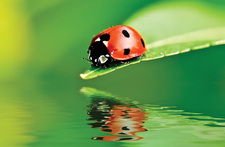Compress image files with Guetzli
Small Wonders

© Lead Image © Stuart Monk, Fotolia.com
The Guetzli image optimizer by Google developers produces smaller images than JPEG while maintaining the same quality, but it requires a powerful computer with a large working memory.
Images play an important role, especially on the Internet. Web hosting providers and users have a keen interest in efficient use of storage space and reduction of load times. With a need to budget its resources wisely, Google therefore set its developers the task of compressing image data.
The result is the Guetzli project – Guetzli being the name for a candy or cookie in the Alemannic German dialect. Under certain, frequently occurring conditions, Guetzli can reduce JPEG images by about a third compared with previous methods. Smaller file sizes then automatically result in quicker website load times.
The Chronicles of JPEG
For a long time, JPEG has been the trusted standard for image compression, but a closer look reveals that the algorithm sometimes produce rather unpleasant artifacts that are difficult to remove. Lossy algorithms remove details from images that are barely visible to the human eye to create larger uniform structures that can then be better compressed, whereas the lossless algorithms, such as JPEG2000 or JPEG-LS [1] generate larger image files. Some variants of Libjpeg [2] support the lossless method, so you should be able to use them under Linux with the appropriate software.
[...]